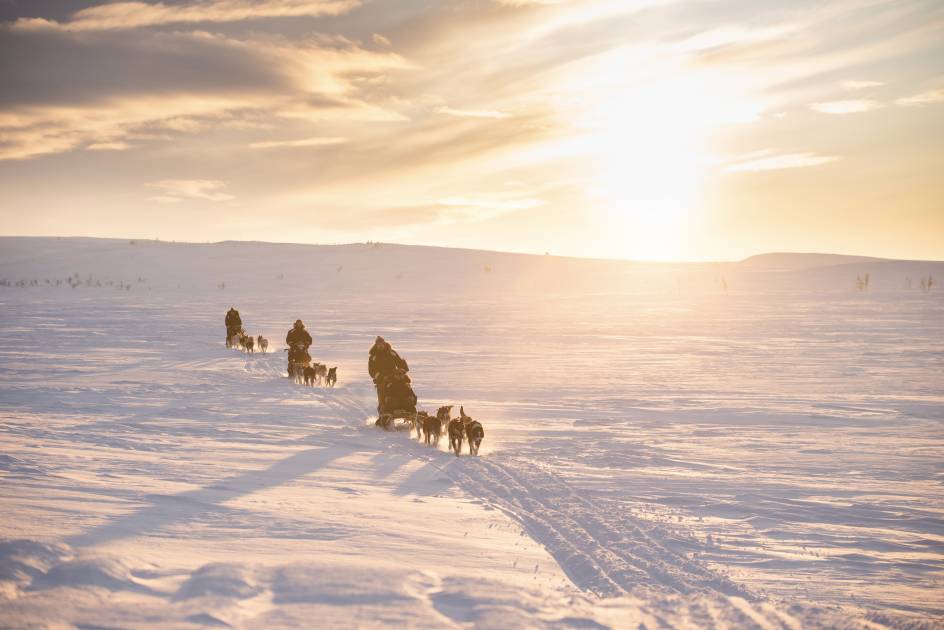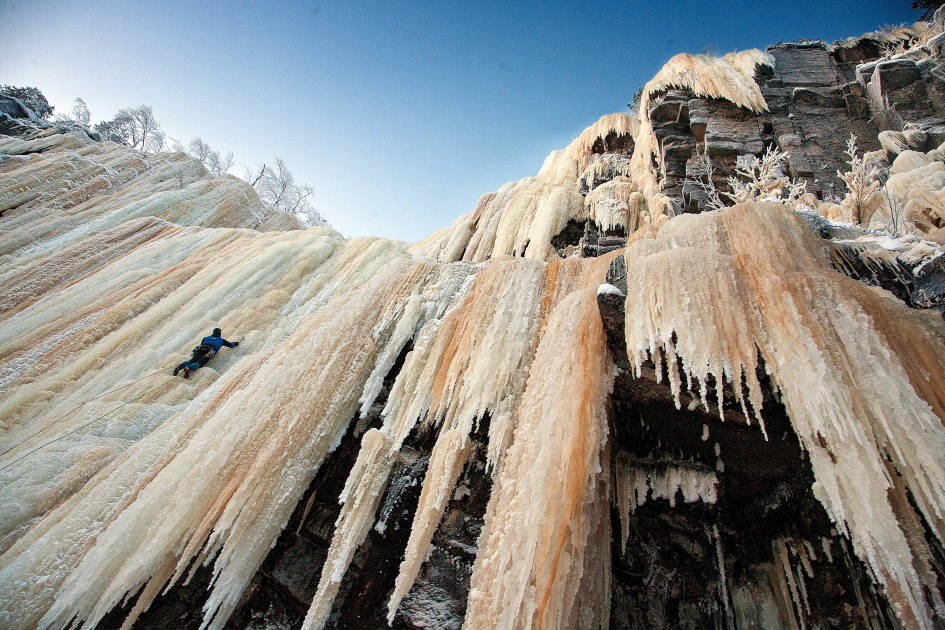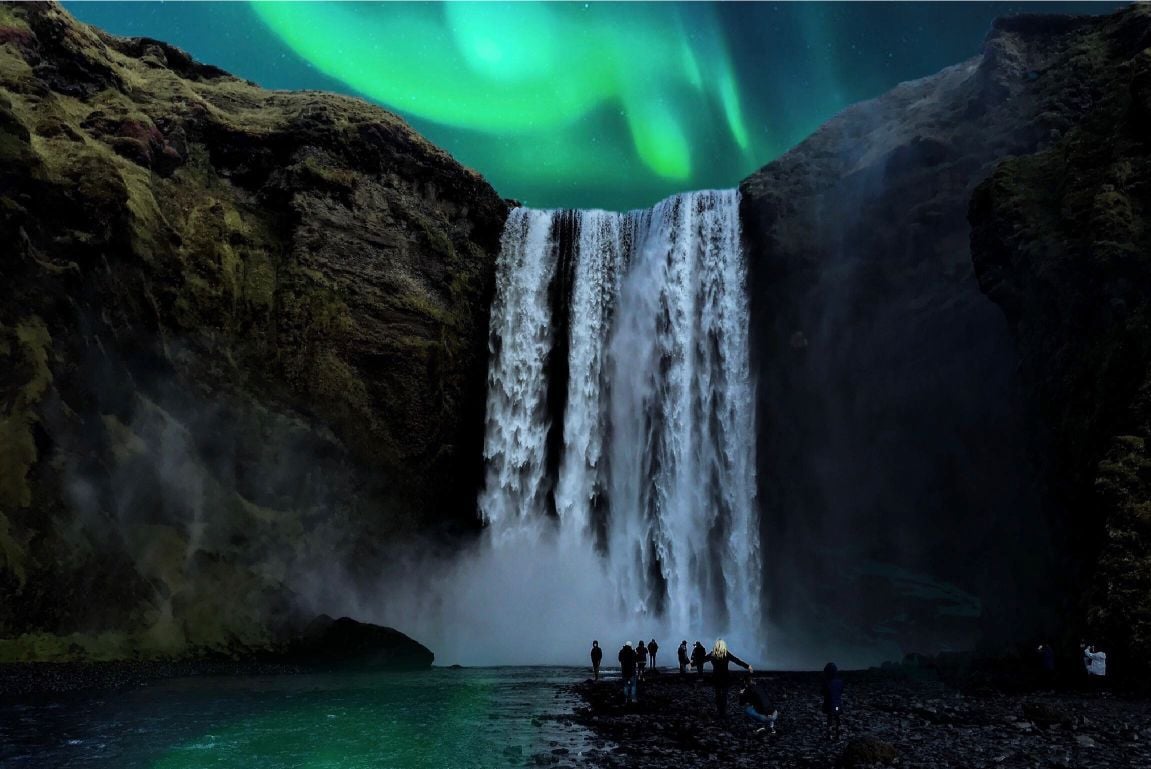Where are the northern lights? That’s the question. The answer, of course, is up north and in the sky. Pretty simple, really. But we’re guessing you want a few more details than that? Fine. You’ve twisted our arm. Let’s get into the specifics. Here’s a guide to where you can see the northern lights around the world, why these spots are so vibrant with the lights and when the best time is to go out stargazing.
Where Can I See the Northern Lights?

The northern lights can be seen in the skies above northern Greenland, Iceland, Norway, Sweden, Finland, northern Canada, Alaska and the western-north of Russia. But during the 'solar maximum' (which occurs between January and October 2024) the auroral oval expands, and it's possible to see the northern lights further south, in places from as central and southern Scandinavia, to northern USA and parts of England and Scotland. So it’s safe to say northern lights holidays can take you all over - and 2024 is one of the best times to go on one.
Why are the Northern Lights Only Visible in Certain Locations?


(Left), an example of the auroral oval visible on the Aurora Forecast. Image: NOAA. (Right) the globe pictured from above, showing the likelihood of seeing the northern lights. Image: NASA/Flickr
The northern lights circle the world in what is known as the “aurora oval” – an oval centred on the North Magnetic Pole of the Earth (which is different to the North Geographical Pole). The northern lights are normally strongest directly under the aurora oval. The places previously listed – Greenland, Iceland, Norway, Sweden, Finland, northern Canada, Alaska and the western-north of Russia – all sit under the aurora oval, and so that’s why you have the best chance of spotting the northern lights in those particular locations.
Solar wind, which affects the temporary disturbance of the Earth’s magnetosphere (magnetic fields), can cause a geomagnetic or solar storm and change the location of the aurora oval and so alter exactly where you can see the lights. This is what we meant when we referred to “geomagnetic activity” in the previous section. When this activity is particularly high, the aurora oval can extend further south, to those other countries, like the USA and Scotland.
There are numerous websites which track the movement of the northern lights/aurora borealis (lights in the northern hemisphere) and southern lights/aurora australis (lights in the southern hemisphere) in different countries. Many of these use data from NOAA's (the National Oceanic and Atmospheric Administration) Aurora 30 Minute Forecast. Have a look at Aurora Forecast for Iceland, The University of Alaska's Aurora Forecast for North America, and the Yr.no for Norway (under the 'other conditions' section).
When is the Best Time to See the Northern Lights?

Visiting a spot within the aurora oval between the equinoxes of September and March will give you the best possible chance of seeing the northern lights. The winter months are better than the summer months because to see the lights, you need dark skies. So from April until the end of August, your chances of seeing the northern lights are significantly lower. That said, the lights tend to be at their peak on the equinoxes themselves – meaning the best chances of a sighting are actually in September and March.
When is the Best Time to See the Northern Lights in Norway in 2024 and 2025?
Between the autumn and spring equinox (20th March to 22nd September) - March to April and September to October are particularly good months. However, November to February are also good. The best time of day to see the lights is between 11pm-2am, when the sky is at its darkest.

When is the Best Time to See the Northern Lights in Iceland in 2024 and 2025?
The best time to see the northern lights in Iceland is between September to March; during the winter season, when the skies are darkest. Because Iceland is so far north, it experiences almost 24 hour daylight during the summer months, so you won't see the northern lights then.
When is the Best Time to See the Northern Lights in Finland in 2024 and 2025?
Between September to November, or February to March. The best time to see the lights is between 10pm and 2am, when the skies are darkest and the lights are at peak activity.

When is the Best Time to See the Northern Lights in Alaska in 2024 and 2025?
From August to April is the best time to see the northern lights in Alaska. This is known as 'Aurora Season'.
5 Stunning Spots to See the Northern Lights

If you are going to hunt down the northern lights, then why not make a proper adventure out of it? Here are some of the most beautiful spots in the world to watch the aurora borealis, and ways you can make the journey that little bit more exciting…
1. The Norwegian Fjords

If you’ve got a bucket list, then the chances are that the aurora borealis are on that bucket list. There’s a good chance they’re snuggling up to the fjords of Norway at the top of that list, too. For good reason. Both are remarkable wonders of nature quite unlike any other in the world. Now, if you look at a fjords map, you’ll see most fjords are on the west coast of Norway, but there are also some in the arctic north. So why not try and combine both the northern lights and the Norwegian fjords in one adventure?

We’ve got a whole article on spotting the northern lights at the Norwegian fjords, but here’s the long and short of it. Tromsø is known as the “capital of the Arctic”, with easy access to some of the most spectacular fjords in the world, and from September to March, you have a high chance of spotting the northern lights in the skies of northern Norway.
2. Shetland

Shetland is the furthest north of any location in Scotland. That makes it closer to the North Pole than any other place in the UK, which means it’s the best place in Britain for aurora viewing. Of course, the chances of a northern lights spotting here aren’t quite what they are in northern Scandinavia. But, we thought we’d highlight it since it’s such a different environment (in terms of both scenery and culture) to most places you can see the northern lights. And if you keep an eye on forecasting apps and get lucky with clouds, you could expect to see the lights a few times during the winter period.
Either way, there are worse places to visit. Shetland is famed for singing seals, an UNESCO Global Geopark and beaches as beautiful and remote as you’ll find in the UK. Wild camping laws in Scotland mean you could pitch a tent on one of those beaches and plant yourself in the wilderness, while you get in the aurora zone and wait for the aurora borealis. Or go for a dram or two at a local pub, have a haggis dinner, then head for a midnight hike under the dark skies.
3. Iceland

Iceland is one of the best spots to see the northern lights - it nudges the Arctic Circle and there's hardly any pollution. Spend your evenings tracking the aurora, and your days ice climbing, glacier hiking and dipping in the country's geothermally heated pools.
4. Alaska

If you’re looking for a far flung adventure, then head to Denali National Park – home to the world famous Denali, the highest mountain in North America at 6190m. There’s no light pollution here. There are a whole lot of incredibly high mountains. And it’s only a three hour drive from Fairbanks, a city in Alaska where you can base yourself from. The aurora are as vivid and regular as anywhere on Earth. Just make sure a moose doesn’t steal your camera while you’re stargazing.
5. Tromsø

If you’re an animal lover, then another Tromsø-based adventure that might be more up your alleyway is a dog sledding expedition with wild camping under the northern lights at night.

You’ll get to play with over 300 huskies. Yes. Over 300. Including puppies. And you’ll probably meet some reindeer too. Then it’s off to camp in a warm Sami tent, a sort of large teepee type structure. With any luck, you’ll get to see the northern lights dance around the night sky before bedtime.
In Summary

Where are the northern lights: Greenland, Iceland, Norway, Sweden, Finland, northern Canada, Alaska, the western north of Russia, and sometimes Scotland and the USA.
When is the best time to see the northern lights? September-March.
Related Content
- 5 Tips for seeing the Northern Lights in the Norwegian Fjords
- 10 of the Most Frequently Asked Questions About the Northern Lights
- Can You See the Northern Lights in Europe in Summer?
Inspired to see the northern lights? Explore our full range of northern lights holidays here.


